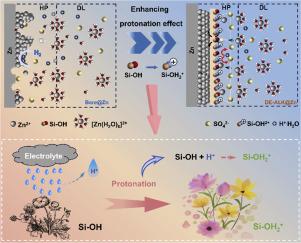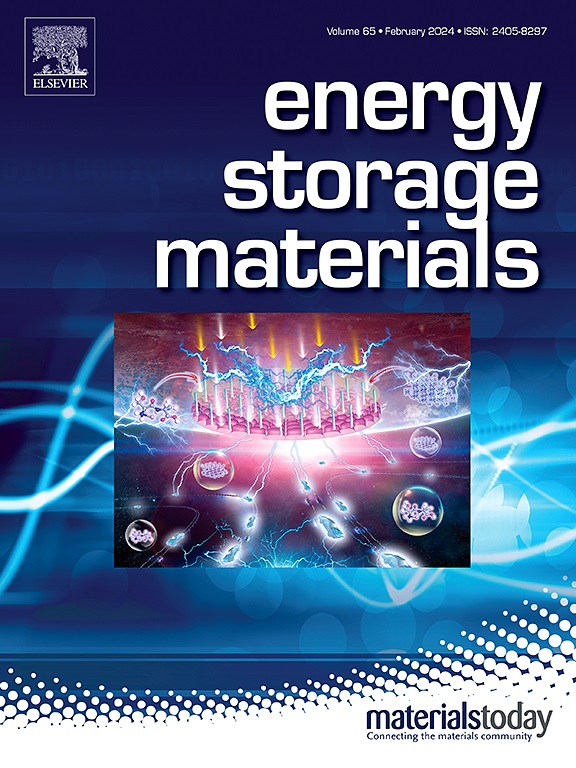Protonated interface microenvironment design towards stable Zinc-Metal pouch cells
IF 18.9
1区 材料科学
Q1 CHEMISTRY, PHYSICAL
引用次数: 0
Abstract
Zinc metal anode is considered to be the major technical shortcoming of building practical aqueous zinc-ion batteries, since random dendrite growth and interfacial chain side reaction would greatly shorten its service life. Herein, a novel protonated diatomaceous earth (DE-ALK)-based artificial interphase is fabricated through a scalable tape-casting strategy. Such protective mechanism not only comes from the physical characteristics but also from the unique protonation interface effect of DE-ALK. As demonstrated, through a strong protonation reaction, the surface charge of DE-ALK shifts from negative to positive of +23.37 mV, result in effectively regulating the anode microenvironment. Benefited from the built-in electrostatic field, the side reactions involving anionic species and HER are suppressed by immobilizing sulfate anions, and the de-solvation of hydrated zinc ions is promoted by weakening the interaction between Zn2+ and water, thereby accelerating the reaction kinetics and inhibiting the dendrite growth. As a result, DE-ALK@Zn symmetrical cell achieves an impressive lifespan exceeding 2400 h at 8 mA cm⁻². Moreover, stable Na2V6O16·1·5H2O (NVO)-based pouch cell was further built, which can deliver 269.8 mAh g−1 and a capacity retention of ∼98.6 % after 100 cycles at 0.5 A g−1. This work offers valuable insights for the industrial advancement of aqueous zinc-ion batteries.


求助全文
约1分钟内获得全文
求助全文
来源期刊

Energy Storage Materials
Materials Science-General Materials Science
CiteScore
33.00
自引率
5.90%
发文量
652
审稿时长
27 days
期刊介绍:
Energy Storage Materials is a global interdisciplinary journal dedicated to sharing scientific and technological advancements in materials and devices for advanced energy storage and related energy conversion, such as in metal-O2 batteries. The journal features comprehensive research articles, including full papers and short communications, as well as authoritative feature articles and reviews by leading experts in the field.
Energy Storage Materials covers a wide range of topics, including the synthesis, fabrication, structure, properties, performance, and technological applications of energy storage materials. Additionally, the journal explores strategies, policies, and developments in the field of energy storage materials and devices for sustainable energy.
Published papers are selected based on their scientific and technological significance, their ability to provide valuable new knowledge, and their relevance to the international research community.
 求助内容:
求助内容: 应助结果提醒方式:
应助结果提醒方式:


